When Mark Davidson was asked to describe with a single word Australian wines, he was stumped. There is no one word that can describe Australian wines, so he chose three: “History, Evolution, Revolution”. This became the name of a Master Class of Australian wines recently held in Stockholm by Mark, who is the Education Director for Wine Australia.
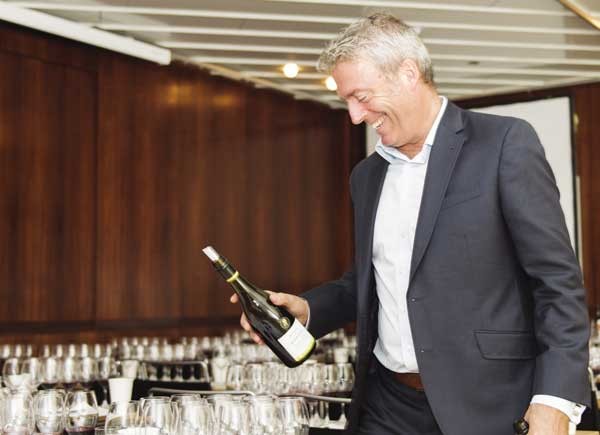
Australia is a big country, but it is a big Wine Country? It depends on how you define big. The area used for wine growing in Australia is as big as the Languedoc in France, while the continent is 14 times larger than France. It was a mixed guidance, so now let the wines speak.
The tasting consisted of three parts with four wines each. They represented history, evolution and revolution, although the latter can also be called experimental wines or wines that pushes boundaries.
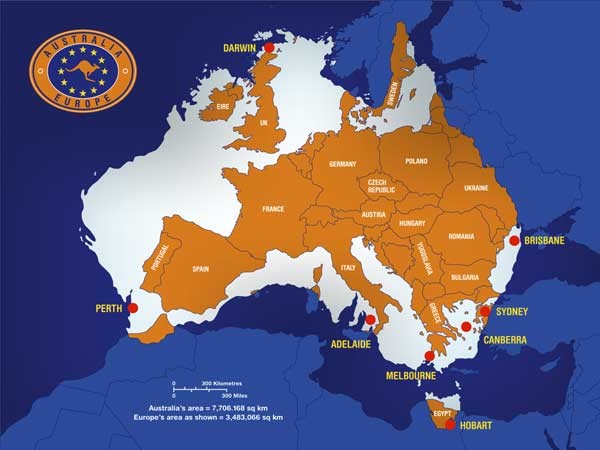
History
McGuigan Bin 9000 Semillon 2007 Hunter Valley, NSW
Yellow plums, wax, barrels, toasted bread despite fermentation in steel tanks and characteristic high acidity, very good. The wine really shows the ageing potential in “Hunter Valley Riesling” as Semillon is sometimes called here.
~16 euro (all price indications are estimated retail prices in Sweden)
Pewsey Vale “The Contours” Riesling 2009 Eden Valley, S AUS
Petroleum, honey, lime and yellow rather than green apples with elegant mineral notes. Aged five years in bottle before release. Australia’s premier areas for riesling has traditionally been Eden (and Clare) Valley and it shows.
~20 euro
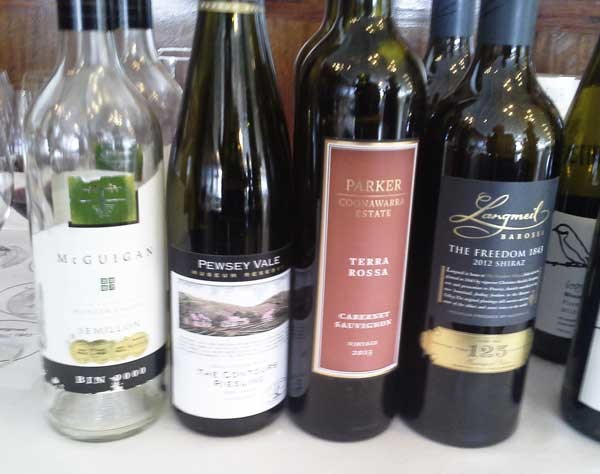
Parker Coonawarra Estate Terra Rossa Cabernet Sauvignon 2013, Coonawarra, S AUS
A well-developed and open wine with good balance and freshness. Aromas of black currants, chocolate, mint, herbs, barrels and red fruit with big tannins, which feel well integrated for a relatively young wine. A fine representative of classic Coonawarra Cabernet Sauvignons.
~22 euro
Langmeil Winery Freedom 1843 Shiraz 2012 Barossa Valley, S AUS
Wonderfully generous wine with powerful aromas of red fruit, blackberries, smoke, herbs, barrels and chocolate. The vineyard is Australia’s oldest Shiraz vineyard, planted in 1843 with pre-phylloxera vines. This is the definition of a fruit-driven Barossa-shiraz of very high quality.
~73 euro
The first four wines are all shining examples of the grapes and the wine styles that are recognized as typical Australian all over the world. Traditions may not always be so ancient, but these wines have become classics in their time.
Evolution
Logan Weemala Pinot Gris 2015, Orange, NSW
Spicy and grapey aroma with pears and peach. The grapes are harvested late which gives the wine a colour that tends towards orange. Wild yeast and aged 10 weeks on the lees. More acididity than expected and a very nice pinot gris from a high altitude vineyards (850m) in cool climate.
~12 euro
Vasse Felix Premier Chardonnay 2014 Margaret River, W AUS
Barrels, yellow apples, lemon, toasted bread and caramel, still young and a little closed. Burgundy-like elegant Chardonnay from a cool climate which spent nine months in French oak barrels, of which 50% were new.
~38 euro
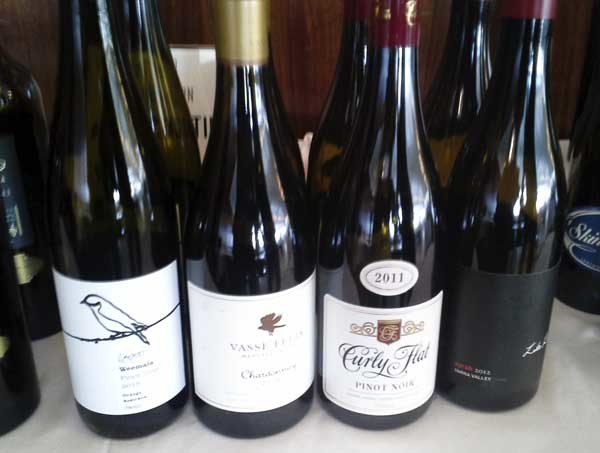
Curly Flat Pinot Noir 2011, Macedon Ranges, Victoria
Strawberry, barrels, herbs with good acidity and pale red colour, an elegant pinot noir in the European style. The wine has spent 22 months on the lees in French oak, used barrels, and was rewarded with a well-deserved Regional Trophy of Decanter in 2015.
~33 euro
Luke Lambert Syrah 2012, Yarra Valley, Victoria
Red berries, animal tones without oak, less peppery tones but fine mineral notes in the the style of Northern Rhône, as the name suggests. Wild yeast and wild (!) malolactic fermentation with 40% whole bunches, maceration for 50 days after the fermentation and aging in large oak barrels.
~38 euro
The “Evolution” showed wines from cooler parts of Australia in a distinctly European style. It’s a trend that can be seen in many parts of the wine world, but Australia has come a long way with high quality wines that have passed the experimental stage.
Revolution
BK Wines Skin ‘n’ Bones 2014 Adelaide Hills, S AUS
Lots of flavour in this wine with notes of grass, green peppers and yellow apples. Reminiscent of Albariño, but is made from 80% Savagnin and 20% Chardonnay. It has been aged for 14 months in large barrels (puncheons). Exciting! (ed. note: Note that the name is written with a space, unlike this medium which is written without space and without s)
~17 euro
Route du Van Dolcetto and Shiraz in 2012, King Valley and Alpine Valley, Victoria
The nose is an unusual mixture of coniferous tones, cranberries, blueberries and stalk. 79% Dolcetto and 21% Shiraz from both the King and Alpine Valley which is also an unusual and rare grape blend. Medium-bodied and food-friendly taste.
~18 euro
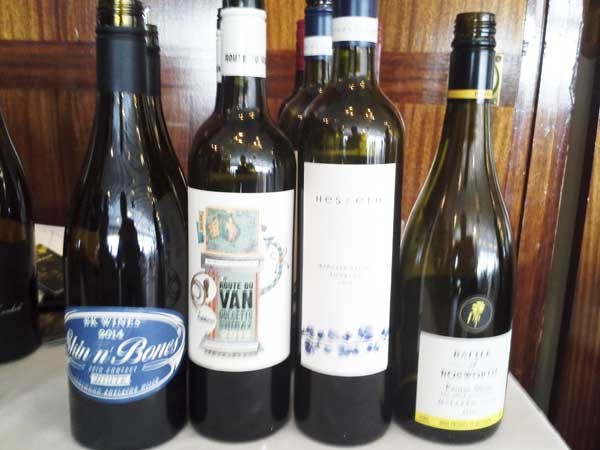
Hesketh Wine Company Small Parcels Touriga Nacional 2014 Barossa Valley, S AUS
Spicy, floral aroma with blackberry, with a hint of jam, herbs, elegant with some acidity and good structure. Not as rustic as a Portuguese Touriga nacional, but an interesting interpretation of the grape.
~15 euro
Battle of Bosworth Puritan Shiraz 2015 McLaren Vale, S AUS
Red fruit, charcuterie and fine herbs, no barrel character. An organic wine with no added sulphur; according the winemaker the stability and durability is still good thanks to a screw cap. An easy wine to drink with a good, not too bleak conversation.
~15 euro
The “Revolution” in the Australian wine industry seems to be going on in many places in Australia. Thanks to the almost unlimited climatic variation for the vines, it will probably also continue with more new interpretations of well-known grapes. Hesketh already makes a pure Negroamaro in Barossa and Holm Oak in Tasmania makes a pure Arneis.
To conclude the tasting the theme “History, evolution and revolution” was put to a test by trying the three different shiraz / syrah wines, one from each group together. First, a high-quality archetypical Barossa-shiraz, followed by a very fine Syrah in the Old World-style and completed by a pure and naked interpretation of shiraz in completely natural style.
In the small-big wine country that is Australia tradition is strong, while evolution continues and the desire for experimentation will create new and exciting wines. It is an extremely vital wine coutnry that really showed some of its best in this tasting.
The tasting was organized by Wine Australia in Stockholm.
Mikael Karlin writes för BKWine Magazine on wine tastings and wine events in Sweden.






